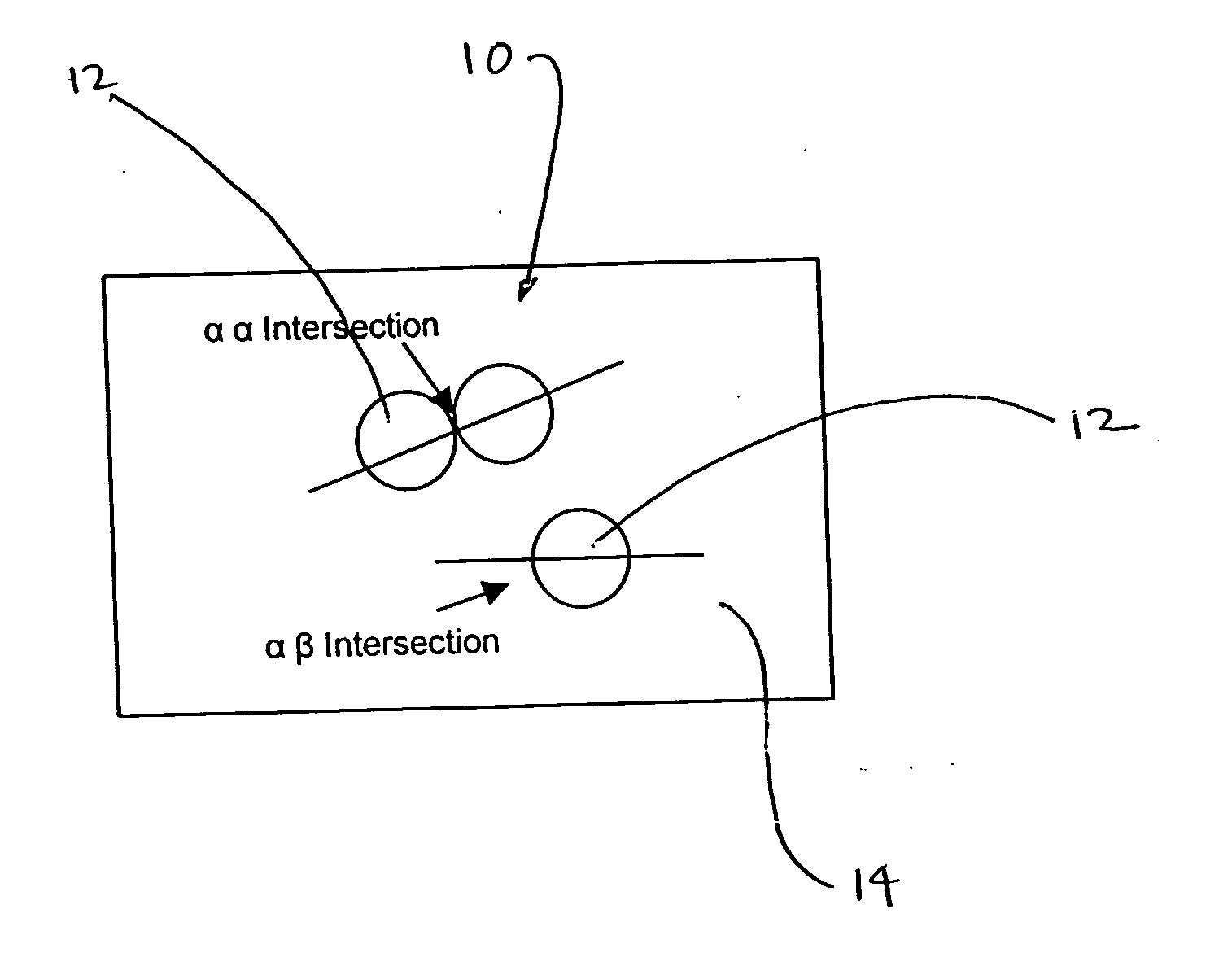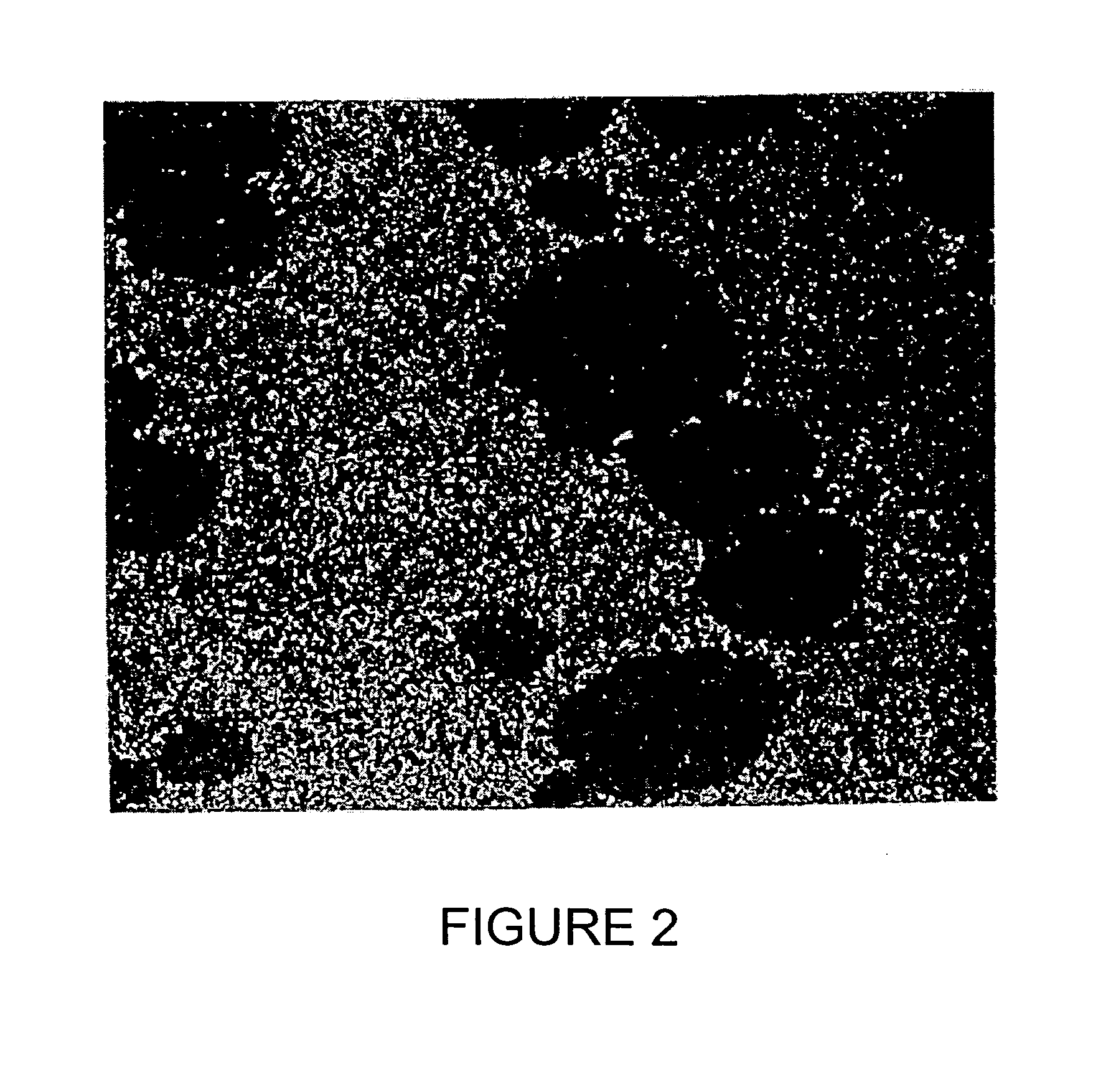Hybrid cemented carbide composites
a cemented carbide and composite technology, applied in the field of hybrid cemented carbide composites, can solve the problems of increasing fracture toughness, increasing toughness generally accompanied by a decrease in wear resistance, and undergoing abrasive wear and thermal fatigu
- Summary
- Abstract
- Description
- Claims
- Application Information
AI Technical Summary
Problems solved by technology
Method used
Image
Examples
example 1
[0035] A hybrid cemented carbide was prepared by the method of the present invention. See FIG. 4B. In the embodiment of the hybrid cemented carbide 45 shown in FIG. 4B, the continuous phase 46 is a tough crack resistant phase and the dispersed phase 47 is a hard wear resistant phase. The composition and the volume ratio of the two phases of the embodiment of FIG. 4B is the same as the hybrid cemented carbide of FIG. 4A, as described above. However, the method of producing the hybrid cemented carbide is different and the resultant difference in hybrid cemented carbide microstructure and properties are significant. Since the granules of the dispersed phase 47 were sintered prior to blending-the granules of the dispersed phase 47 did not collapse significantly upon consolidation of the blend, resulting in a contiguity ratio of the embodiment shown in FIG. 4B is 0.31. Significantly, the contiguity ratio of this embodiment is less than the contiguity ratios of the hybrid cemented carbide...
example 2
[0036] A hybrid cemented carbide was prepared by the method of the present invention. Granules of a hard cemented carbide, FK10F™, were sintered at 1000° C. Sintered granules of the FK10F™ cemented carbide were blended with “green” or unsintered granules of 2055™ cemented carbide. The blend comprising the sintered and unsintered granules was then consolidated and sintered using conventional means. Powder consolidation using conventional techniques may be used, such as, mechanical or hydraulic pressing in rigid dies, as well as, wet-bag or dry-bag isostatic pressing. Finally, sintering at liquid phase temperature in conventional vacuum furnaces or at high pressures in a SinterHip furnace may be carried out. See FIG. 5B. In the embodiment of the hybrid cemented carbide 55 shown in FIG. 5B, the continuous phase 56 is a tough crack resistant phase and the dispersed phase 57 is a hard wear resistant phase. The composition and the volume ratio of the two phases of the embodiment of FIG. 5...
PUM
| Property | Measurement | Unit |
|---|---|---|
| volume fraction | aaaaa | aaaaa |
| volume percent | aaaaa | aaaaa |
| volume percent | aaaaa | aaaaa |
Abstract
Description
Claims
Application Information
 Login to View More
Login to View More - R&D
- Intellectual Property
- Life Sciences
- Materials
- Tech Scout
- Unparalleled Data Quality
- Higher Quality Content
- 60% Fewer Hallucinations
Browse by: Latest US Patents, China's latest patents, Technical Efficacy Thesaurus, Application Domain, Technology Topic, Popular Technical Reports.
© 2025 PatSnap. All rights reserved.Legal|Privacy policy|Modern Slavery Act Transparency Statement|Sitemap|About US| Contact US: help@patsnap.com



